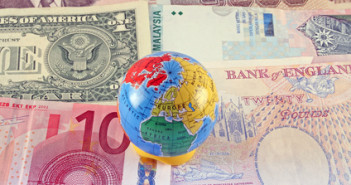The Reserve Bank of Australia cut their main interest rate by 25 bps yesterday to 3%. The cut is the sixth one in the last 14 months. It brings Australia’s rate to a half-century low that was last seen during the 2009 global recession. The interest rate hadn’t fallen this low since April 2009 and this rate is the lowest since 1960.
RBA governor Glenn Stevens said in his statement that the Australian dollar remains “higher than one might have expected†based on lower export prices and a general weaker global outlook.
He added that the decision to ease also had to do with Australia’s concern over wage pressure, a lower projected mining spending, as well as an unemployment rate at a 2 1/2 year high. Australia’s interest rate remains the highest rate among the major developed economies.
The Australian Dollar has rallied following the announcement. The AUD was trading at the 1.0425 level prior to the announcement and is currently trading in the 1.0460-70 area. The reason given for the rise in the currency has been the “hawkish†stance of the RBA governor’s statement. He said that monetary policy “was appropriate nowâ€, as opposed to last month when he described monetary policy as “appropriate for the time beingâ€. For those interested in history, the last time the RBA had rates at 3%, in 2009, the AUD rate was around the .8000 level. This year the AUD has had an average level of 1.0350.
The EUR remains well bid as traders are reacting positively to the successful Greek buy-back of debt and the formal request by Spain for EU funds to help recapitalize their ailing banks. Adding to the positive EUR feeling was a comment from German Chancellor Merkel who said “if one day Greece produces a budget surplus, official holders of Greek debt might consider a haircutâ€. Traders pretty much ignored lower economic data in Europe and the downgrade of the European Stability Mechanism by Moody’s on Friday. The did however react negatively towards the USD on the release of ISM numbers on Monday that showed a fall from 51.7 to 49.5. Traders will continue to watch the ongoing negotiations on the fiscal cliff, and will begin to focus on the non-farm payroll release due Friday.
Support for the EUR is at the 1.3025, and 1.3000 level with resistance at 1.3095 and 1.3120.
USD/CAD remains in a tight range for the time being, and interday trading bias remains neutral. The support level remains at .9920, then .9890. Resistance is at .9975.
As far as trading today is concerned, traders seem comfortable being “long†EUR so I would expect the bid tone to remain.
Further reading:Â Is nowhere a safe-haven?



